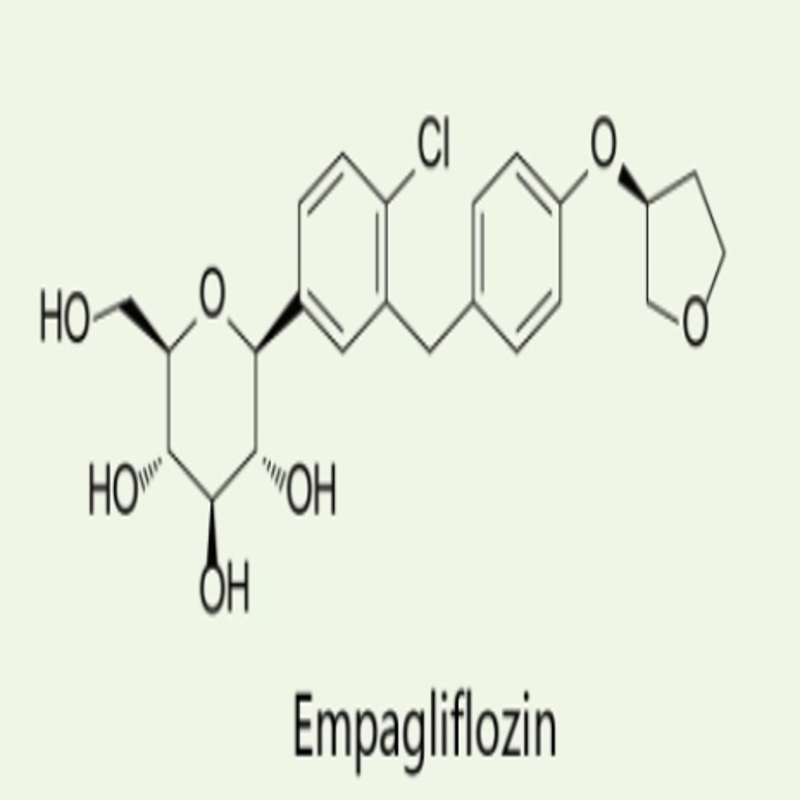-
Categories
-
Pharmaceutical Intermediates
-
Active Pharmaceutical Ingredients
-
Food Additives
- Industrial Coatings
- Agrochemicals
- Dyes and Pigments
- Surfactant
- Flavors and Fragrances
- Chemical Reagents
- Catalyst and Auxiliary
- Natural Products
- Inorganic Chemistry
-
Organic Chemistry
-
Biochemical Engineering
- Analytical Chemistry
- Cosmetic Ingredient
-
Pharmaceutical Intermediates
Promotion
ECHEMI Mall
Wholesale
Weekly Price
Exhibition
News
-
Trade Service
*For medical professionals only.
It is not simple obesity, nor is it that obesity affects development
.
Finally, the endocrinologist did this to clarify the cause! What is your first reaction when you encounter a patient with "obesity, delayed sexual development, and intellectual disability" in clinic? In the endocrinology annual inventory in 2021, Dr.
Chao Chen from the Department of Metabolic Endocrinology, Second Xiangya Hospital, Central South University brought you an unusual case
.
Case review: Careful review of the patient's medical history The child, male, was 11 years old
.
Chief Complaint: 11 years behind in development and 6 years in weight gain
.
History of present illness: The child was born prematurely in 7 months of pregnancy, with an unknown birth length and a weight of 3.
5 kg.
No detailed records of height and weight parameters have been made since then.
Compared with boys of the same age, the height is similar and the weight is slightly heavier
.
At the age of 5, the weight was 23kg, and then the weight increased linearly.
At the age of 11, the weight reached 78.
6kg and the height was 152cm
.
Personal history: Developmental history of major sports and language: I can only raise my head in July; sit alone at the age of 1; walk and speak at the age of 2; go to primary school at the age of 7
.
Feeding history: weak sucking at birth (milk feeding), relieved in 2-3 months, supplementary food added normally in July, self-feeding at about 1 year and 4 months old, good appetite on weekdays, and fond of high-calorie foods (milk tea, fried chicken, hamburger)
.
Family history: parents are not consanguineous, father is 168cm, mother is 156cm (genetic height: 155.
5-168.
5cm), sister is 19 years old, 154cm, both healthy, denying similar medical history in the family
.
Complete the corresponding auxiliary examinations and admission to the specialist physical examination: blood pressure: 115/80mmHg, height: 152.
0cm (+1SD), weight: 78.
6kg (>+3SD), BMI: 34.
0kg/m2, waist circumference: 118cm, hip circumference: 106cm, Waist-to-hip ratio: 1.
11, acanthosis nigricans-like changes on the skin of the neck, narrow purple lines on the skin of the chest and abdomen, almond eyes, no galactorrhea on both breasts, no axillary hair, no pubic hair, Tanner stage I, male genitalia, bilateral testes Small, about the size of soybeans, the penis is about 2cm long, phimosis
.
Figure 1 A: neck skin; B: chest and abdomen skin; C: penis and testis size Routine and biochemical tests: blood, urine, stool routine + OB normal
.
Liver function: alanine aminotransferase 194.
2u/l↑, aspartate aminotransferase 110.
4u/l↑, the rest were normal
.
Renal function: uric acid 516.
0umol/l↑, the rest was normal
.
Four blood lipids: triglyceride 1.
23mmol/l, total cholesterol 4.
52mmol/l, high density lipoprotein cholesterol 1.
04mmol/l ↓ , low density lipoprotein cholesterol 3.
13mmol/l ↑
.
Serum electrolytes, autoimmune liver, hepatitis full set: normal
.
A 75g OGTT or a 100g steamed bread meal indicates normoglycemia but hyperinsulinemia (as shown in Table 1)
.
Table 1 Blood glucose test Endocrine test: three items of thyroid function, GH, IGF-1 and IGFBP-3 were normal, ACTH and COR rhythms, six sex hormones, and GnRH stimulation test were shown in Table 2
.
Table 2 ACTH and COR rhythms, 6 sex hormones, GnRH stimulation test Abdominal color Doppler: fatty liver; scrotum color Doppler: left testis 13 × 7 mm, right 14 × 8 mm, bilateral testicular values are small; sleep breathing monitoring: 1.
Consistent with sleep apnea-hypopnea syndrome; obstructive predominant; mild, 2.
nocturnal sleep hypoxemia; body fat determination: Total Body % Fat 56.
3%↑, Est.
VAT Area 188 cm2↑; Intelligence assessment: The language score is 48 points, the operation score is 72 points, and the full scale score is 56 points, which belongs to mild mental retardation
.
After analyzing layer by layer, it is found that the real murderer is here.
Do you already know the diagnosis of the patient? Isn't this a case of simple obesity in children? Don't worry, let's take a look below! To diagnose simple obesity, it is necessary to exclude the main causes of secondary obesity, including: (1) hypercortisolism; (2) hypothyroidism; (3) hypothalamic or pituitary diseases; (4) pancreatic islet-related diseases: T2D, pancreatic islets β-cell tumor, functional spontaneous hypoglycemia
.
However, the medical history, physical examination, and laboratory tests do not support the diagnosis of the above secondary obesity etiology.
So, is the patient simply obese? Reviewing the medical history, "the child has abnormal feeding difficulties, obesity, developmental delay, mental retardation, and sexual development retardation"
.
We wonder if there is a syndrome that includes obesity that explains all of the above findings? Early-onset severe obesity often indicates hereditary obesity, including monogenic non-syndromic obesity, monogenic syndrome obesity and polygenic obesity
.
The first two are collectively referred to as monogenic obesity
.
Among them, monogenic syndromes include Prader-Willi syndrome, Bardet-Biedl syndrome, Alstrom syndrome, etc.
(as shown in Table 3).
The main clinical manifestations include obesity and various developmental abnormalities.
The identification mainly depends on genetic examination [ 1]
.
Table 3 Main clinical features of obesity in monogenic syndrome Therefore, the child and his family were persuaded to carry out genetic testing, but as expected, the result suggested that the child had Prader-Willi syndrome.
Since the child's parents did not have this mutation, it was a new mutation
.
What is Prader-Willi Syndrome, which is hard to find? Prader-Willi syndrome (PWS) was first reported by Prader and Willi et al.
in 1956, and it was the first genetic disorder confirmed to involve genomic imprinting
.
Also known as hypotonia-mental retardation-gonadal developmental delay-obesity syndrome, Prader-Willi syndrome, chubby-Willi syndrome
.
The incidence of different populations abroad is about 1/10 000 ~ 1/30 000, and China lacks epidemiological data [2]
.
Clinical manifestations: The clinical manifestations of PWS are complex and diverse, and the characteristics of each age group are different
.
The main performance is shown in Table 4 [3]
.
Table 4 Main clinical manifestations of PWS at different ages According to reports, the main clinical manifestations of PWS in China are [4]: decreased fetal activity, 100% hypotonia in the neonatal period, feeding difficulties and malnutrition in infancy are prominent manifestations
.
Among them, 77.
4% of patients had sexual retardation, high appetite and excessive weight gain; 54.
8% of patients had typical facial features; 35.
5% of patients showed self-skin damage; 12.
9% of patients had short stature (as shown in Figure 2)
.
Figure 2 Diagnosis of the main clinical manifestations of PWS: The diagnosis of PWS is divided into clinical score diagnosis and molecular genetic diagnosis: The clinical diagnosis score includes 6 major criteria, 11 minor criteria and 8 supporting evidences (Table 5) [2]
.
(1) Age <3 years old: the total score is 5 points or more, and the main diagnostic criteria is 4 points
.
Table 5 Clinical scoring criteria of PWS The children in this article meet the main criteria of hypotonia in the neonatal period, poor sucking ability, feeding difficulties in infancy, small external genitalia, developmental delay, intellectual disability, and also have sleep apnea and decreased fetal movement times.
To standard, the total score is 5 points
.
Although the patient's diagnostic score does not reach 8 points, it does not meet the clinical score diagnosis, but the diagnostic criteria of PWS clinical score is affected by multiple factors such as age, course of disease, race, etc.
, which may easily lead to missed diagnosis or delayed diagnosis.
The diagnosis needs to be based on molecular genetic diagnosis.
The specific process is shown in the figure 3 shown
.
Diagnostic methods include karyotype analysis technology, fluorescence in situ hybridization (FISH), microsatellite linkage analysis and methylation analysis [4]
.
Figure 3 PWS diagnostic process This child through molecular genetic diagnosis, the final diagnosis of PWS
.
Treatment: The current principles of PWS treatment include three aspects: dietary behavior and nutritional management, treatment of gonadal dysplasia and puberty development problems, and growth hormone therapy [4]
.
The specific content is shown in Figure 4
.
Figure 4 Treatment By referring to the PWS treatment plan, the children in this paper mainly adopted life>
.
Therefore, it is only recommended that children closely observe their pubertal growth and sexual development, and conduct regular follow-up visits in the later period
.
At the end of the experience, Dr.
Chaochen concluded: PWS is a rare genetic disease involving genetic imprinting; the clinical manifestations are complex and diverse, and the characteristics of each age are different; molecular genetic testing is required for diagnosis; treatment is full of challenges
.
When we encounter children with obesity, delayed sexual development, and intellectual disability in clinic, we find some unusual symptoms from common symptoms, and we need to consider the possibility of rare diseases such as PWS
.
Auditing teacher Chaochen, the attending physician of the Department of Metabolic Endocrinology, the Second Xiangya Hospital of Central South University, MD, was funded by the China Scholarship Council from 2010 to 2013 to jointly train with Prof.
Li Wen's laboratory in the Department of Endocrinology, Yale University, and presided over the National Natural Science Foundation of China.
1 project of the Natural Science Foundation of Hunan Province, and 5 projects of the National Natural Science Foundation of China
.
Published 7 SCI papers
.
The research results have won the Outstanding Master's Thesis of Hunan Province, the Excellent Poster and Paper Award of the 13th and 17th National Academic Conference of the Diabetes Branch of the Chinese Medical Association, and the Youth Committee of the Diabetes Professional Committee of the Hunan Medical Association.
The first prize of the English Speech Contest for Physicians, the national academic trump card of "La Liga Storm 3.
0", the top ten lecturers of the 10th Central South University Teaching Competition, the top ten attending physicians of the Second Xiangya Hospital of Central South University (2021) References: [1] Yu Baowen , Zhou Hongwen.
Research progress of hereditary obesity[J].
Journal of Clinical Internal Medicine, 2020, 37(9):5.
[2] .
Endocrine Genetics and Metabolism Group of Pediatrics Branch of Chinese Medical Association, Chinese expert in the diagnosis and treatment of Prader-Willi syndrome Consensus (2015), Chinese Journal of Pediatrics, 2015,53(06): 419-424.
[3] National Health Commission of the People's Republic of China, Guidelines for the diagnosis and treatment of rare diseases (2019 edition).
[4]Lu W, Qi Y, Cui B, et al,Clinical and genetic features of Prader-Willi syndrome in China.
Eur J Pediatr, 2014, 173(1):81-6.







